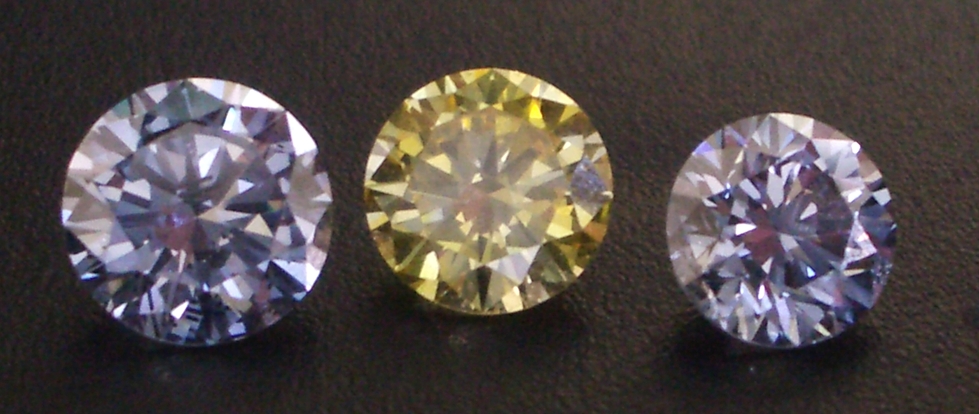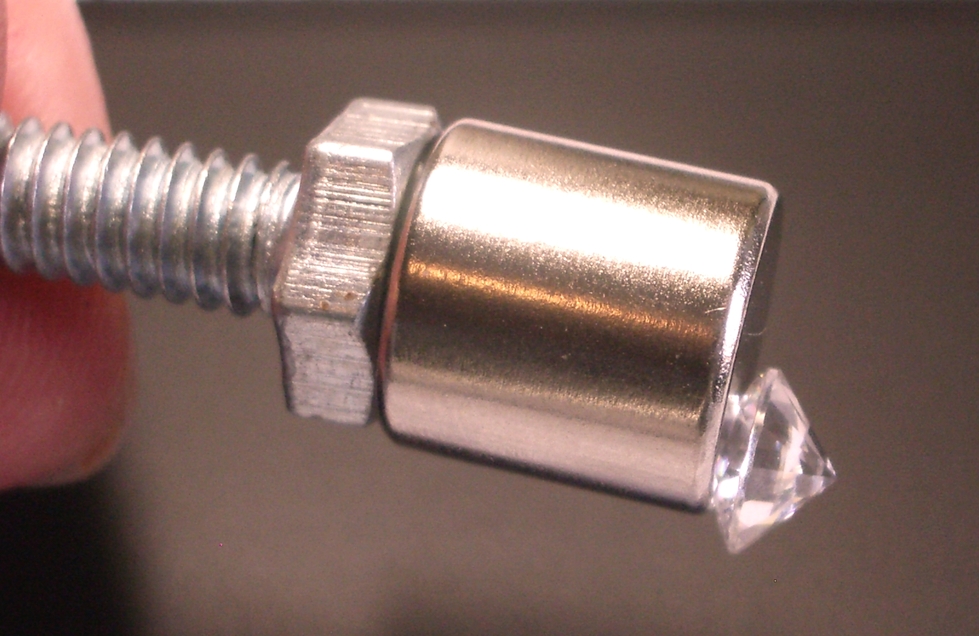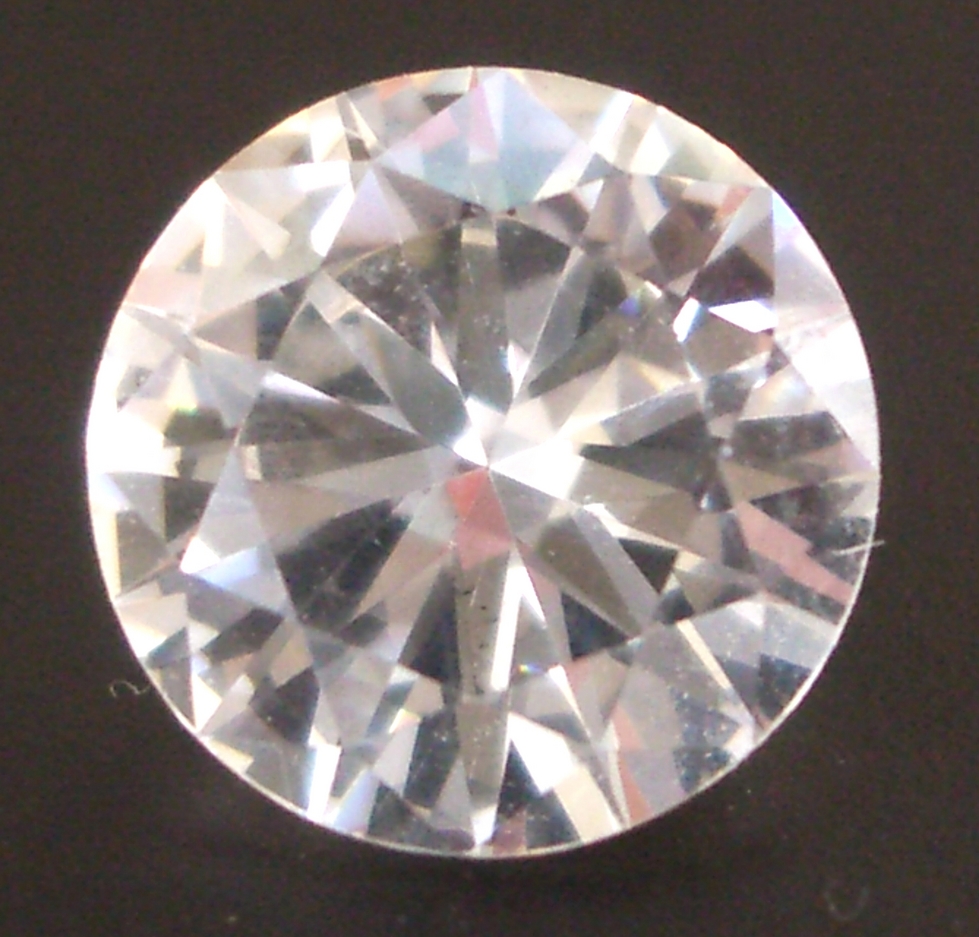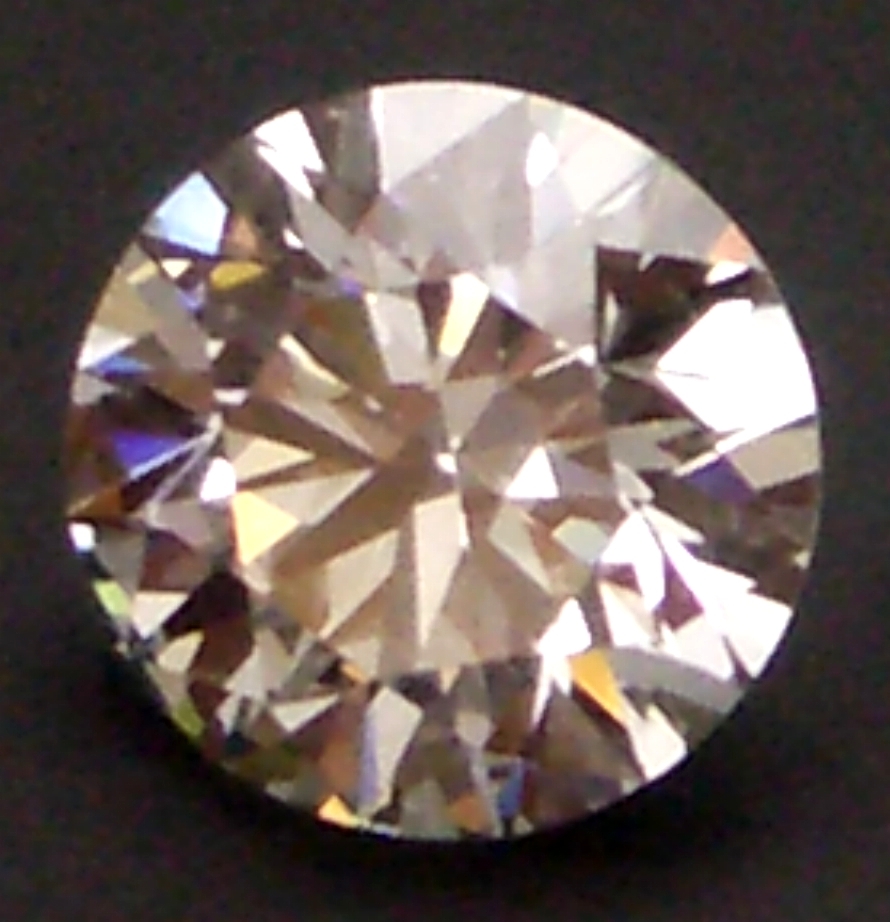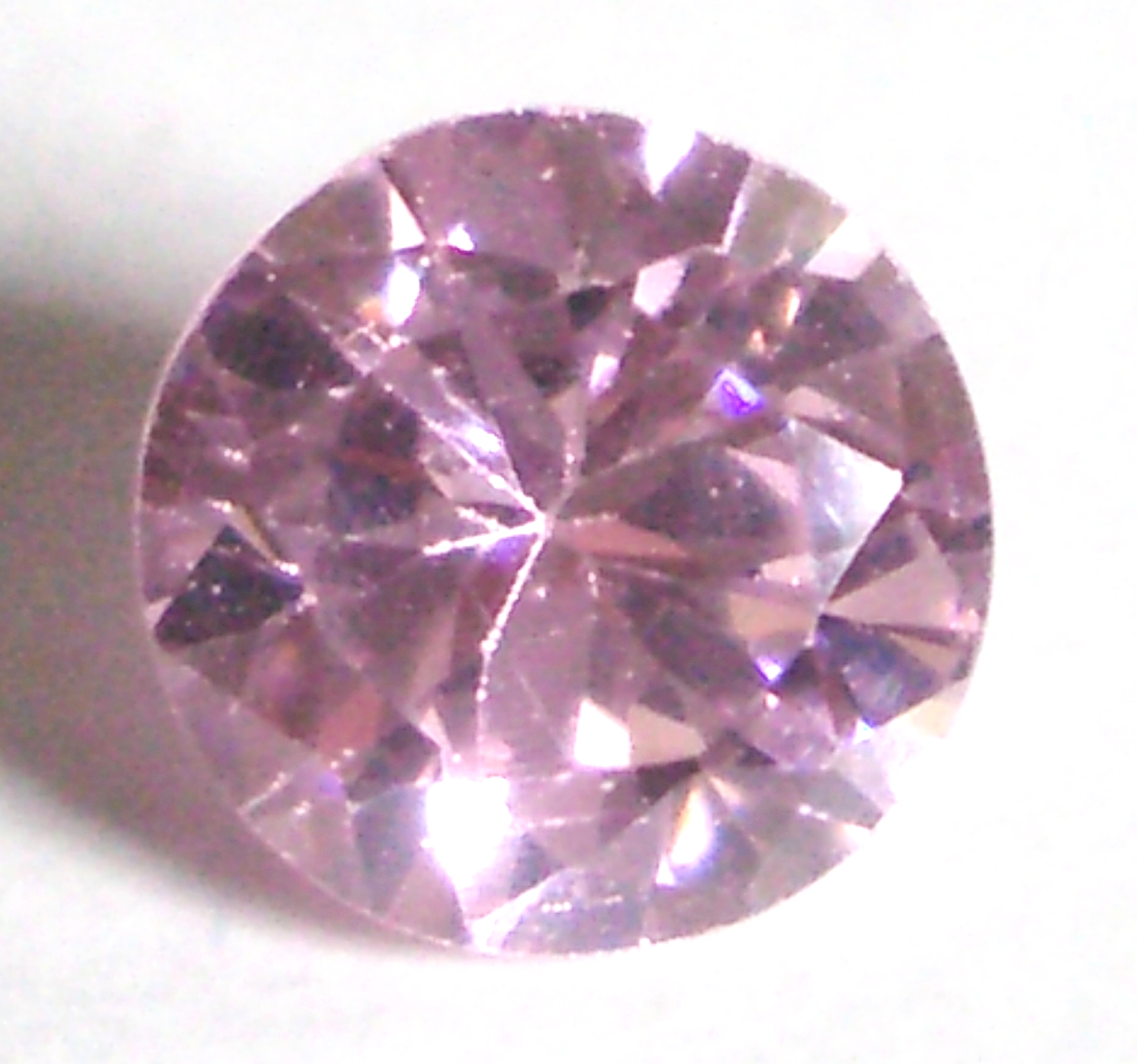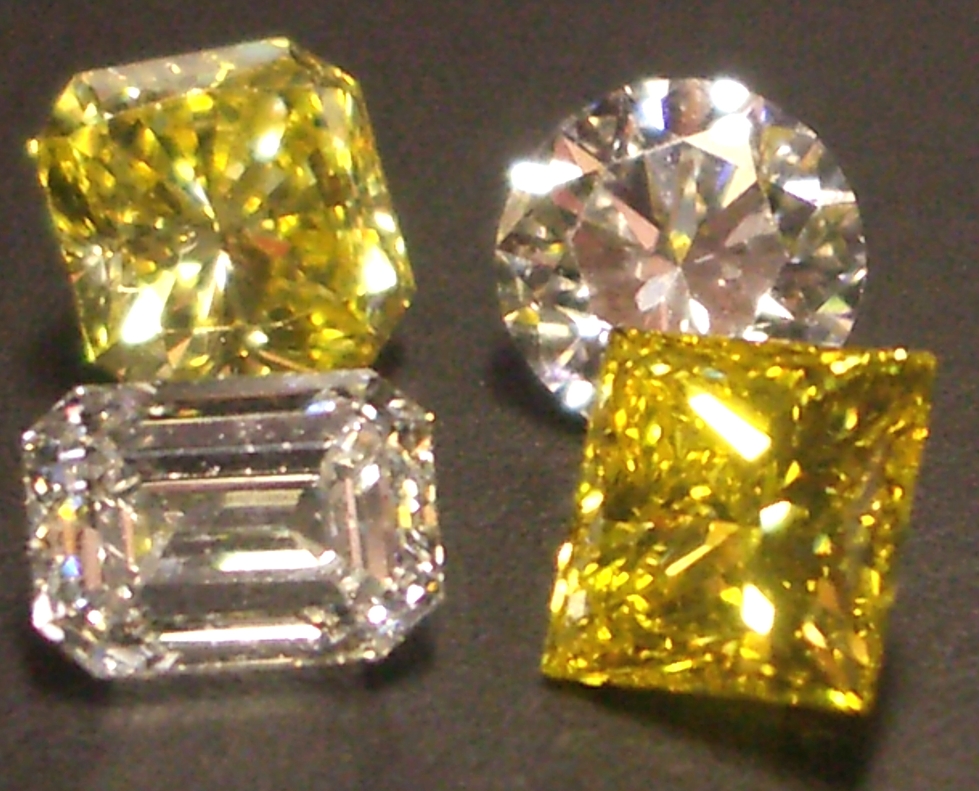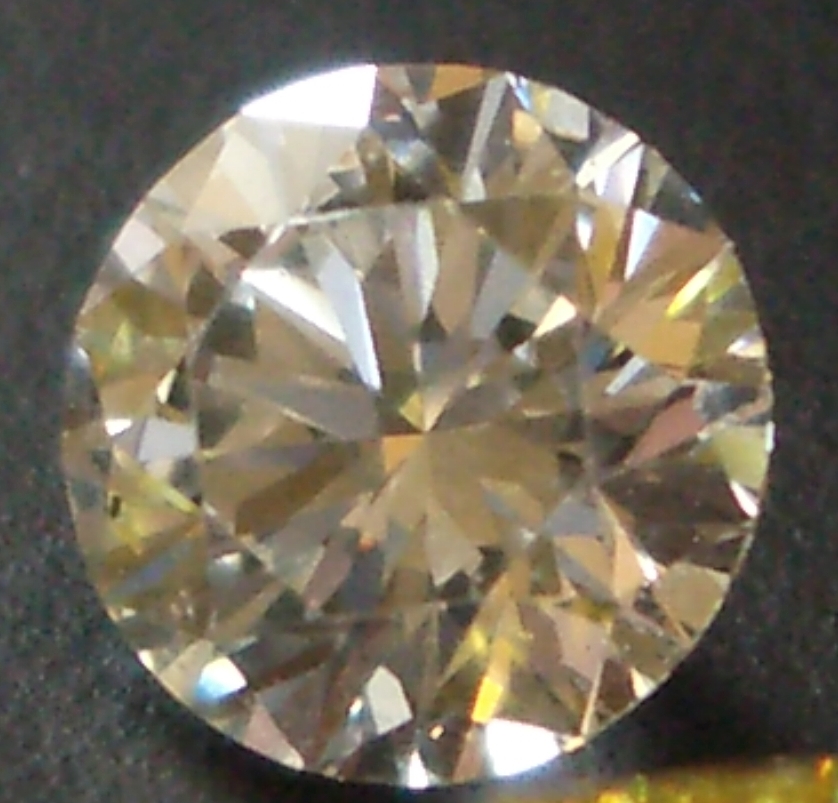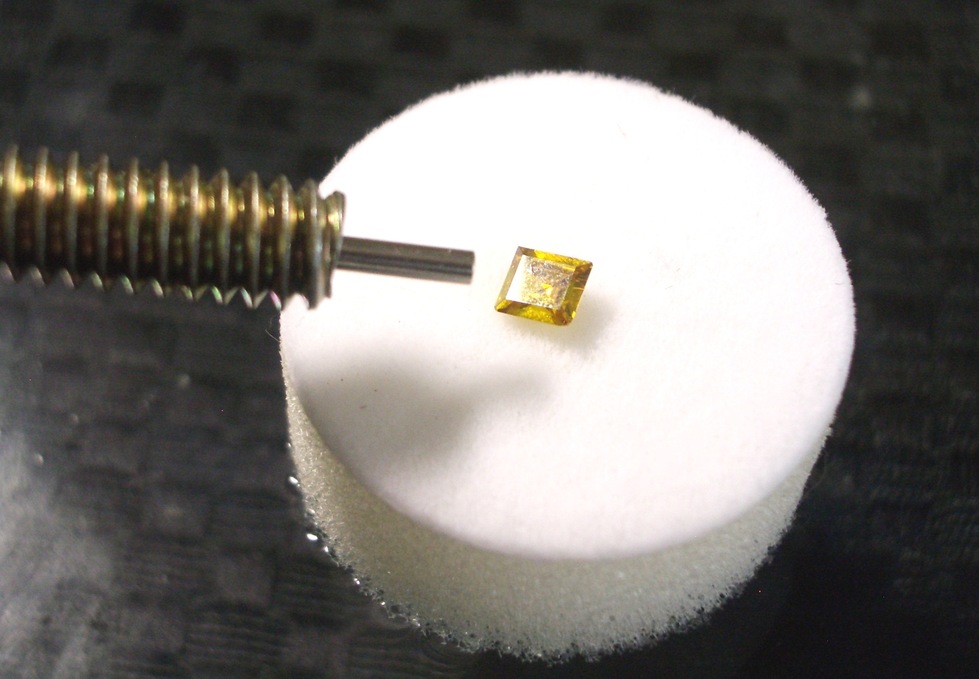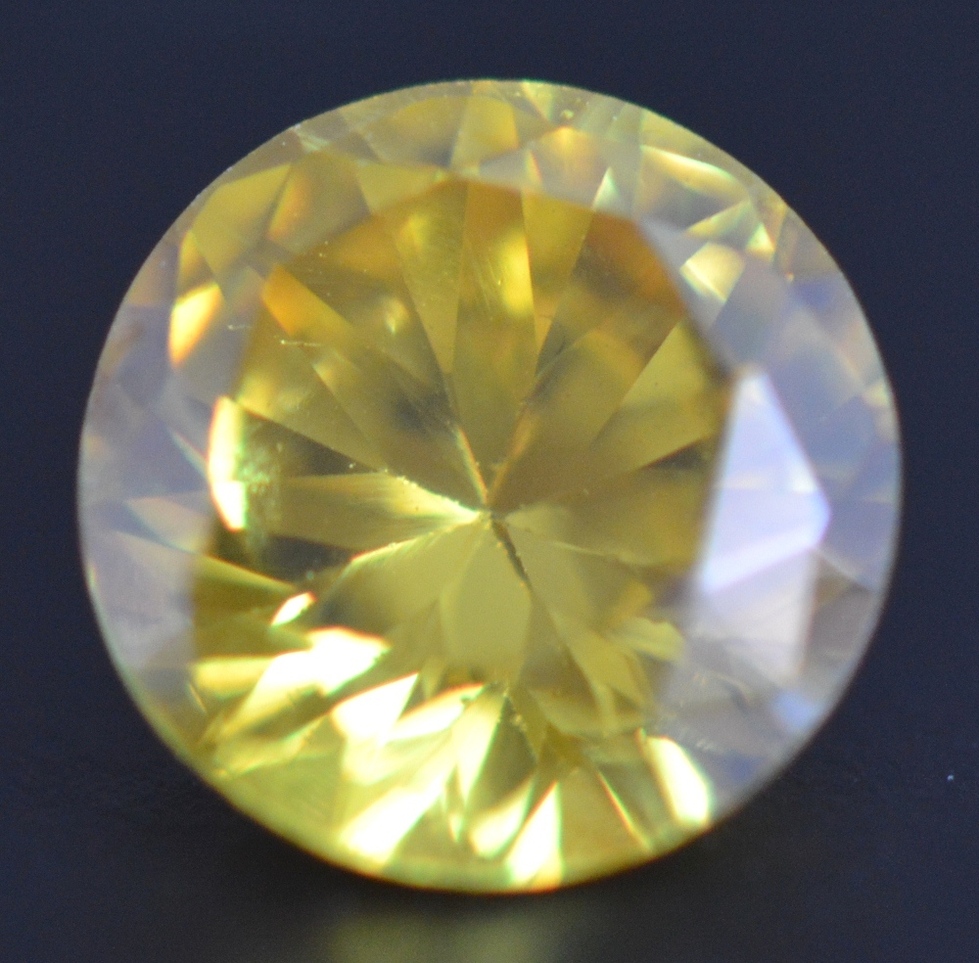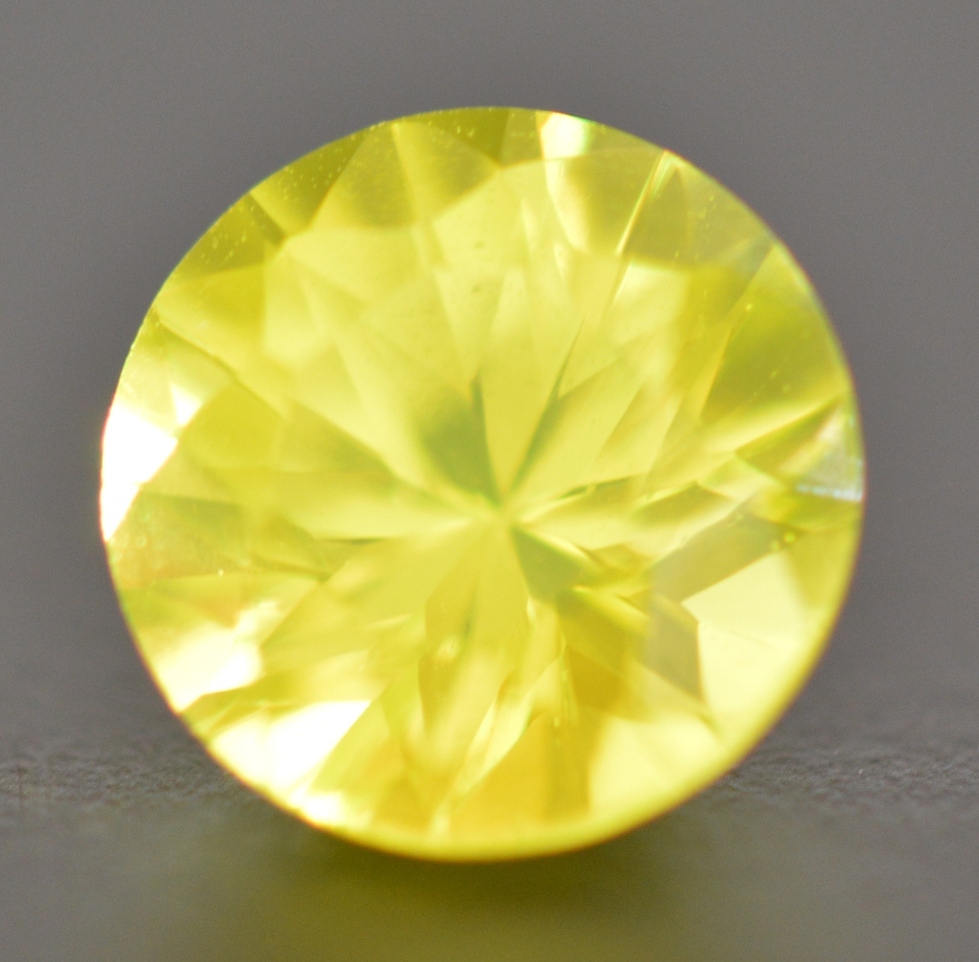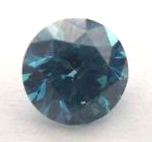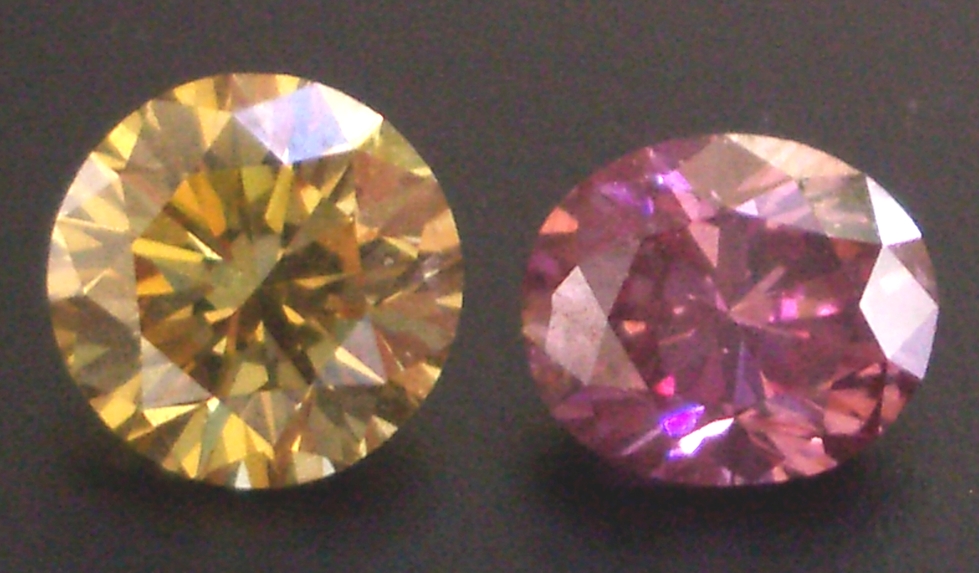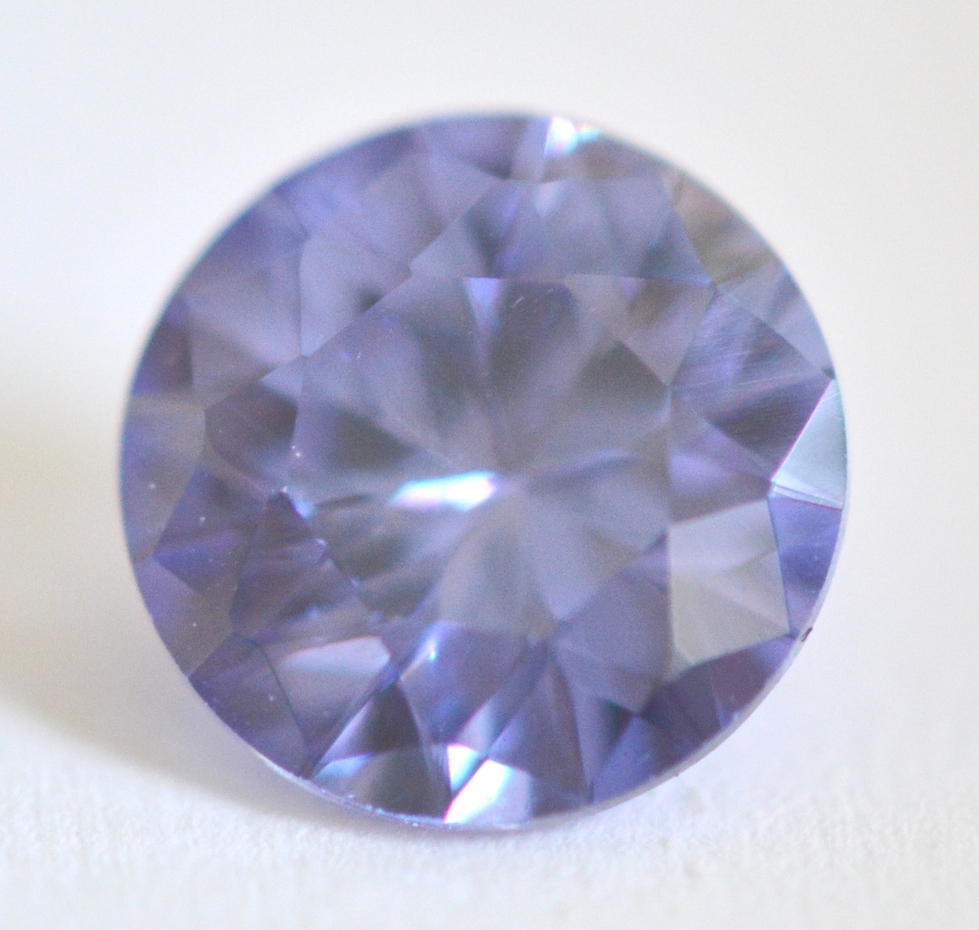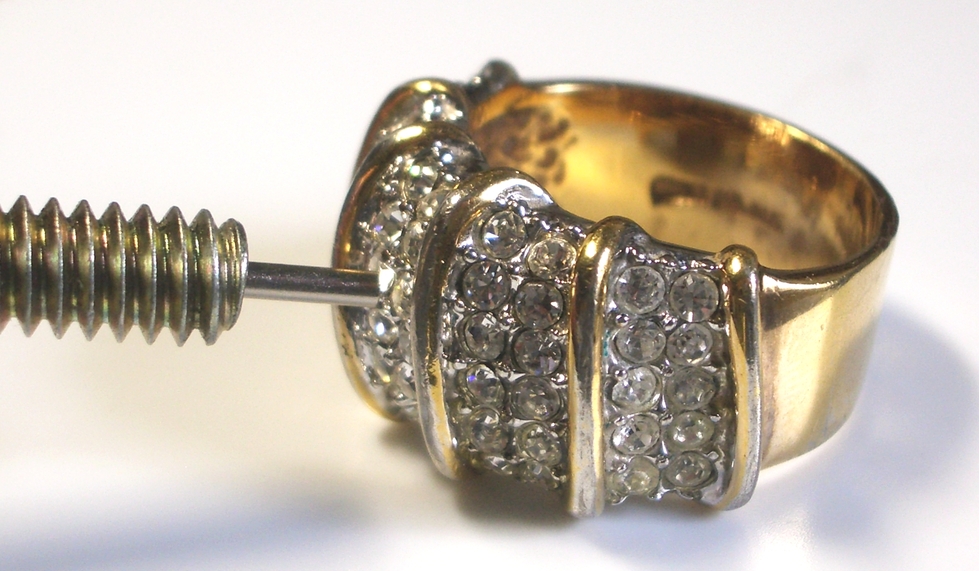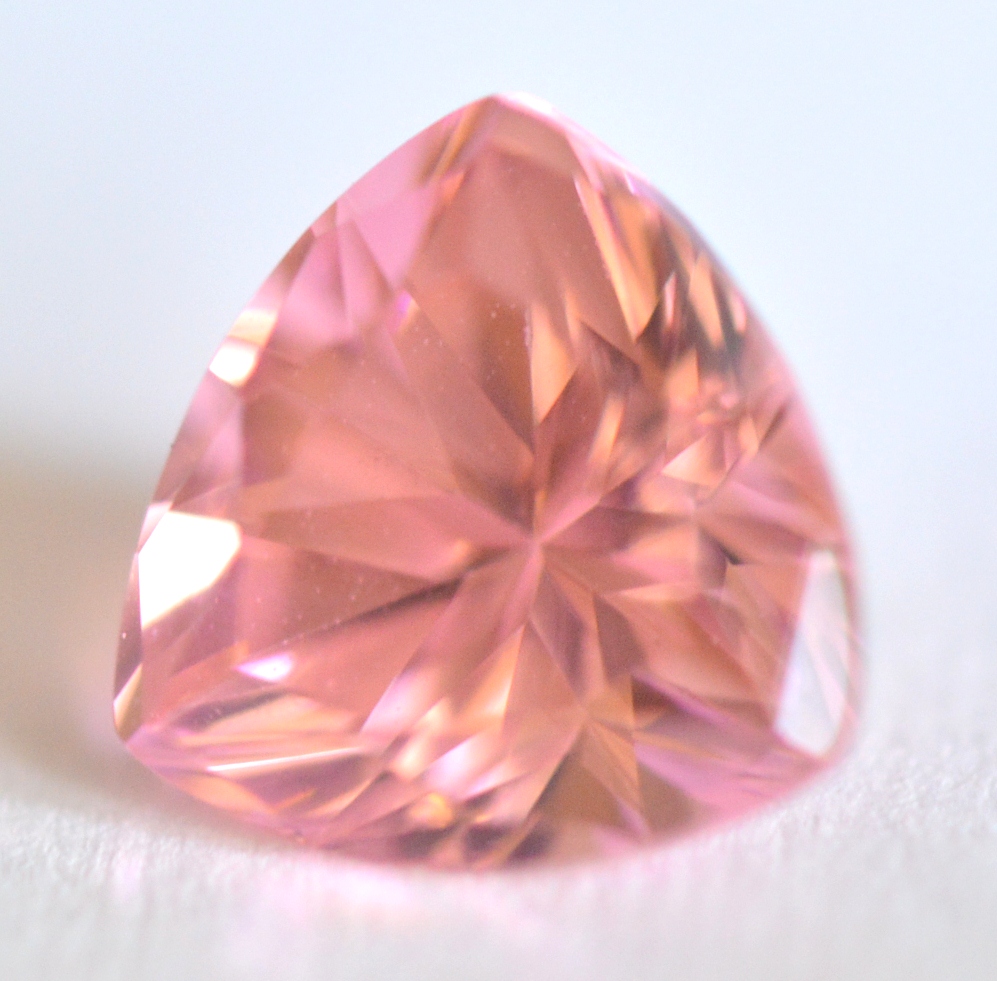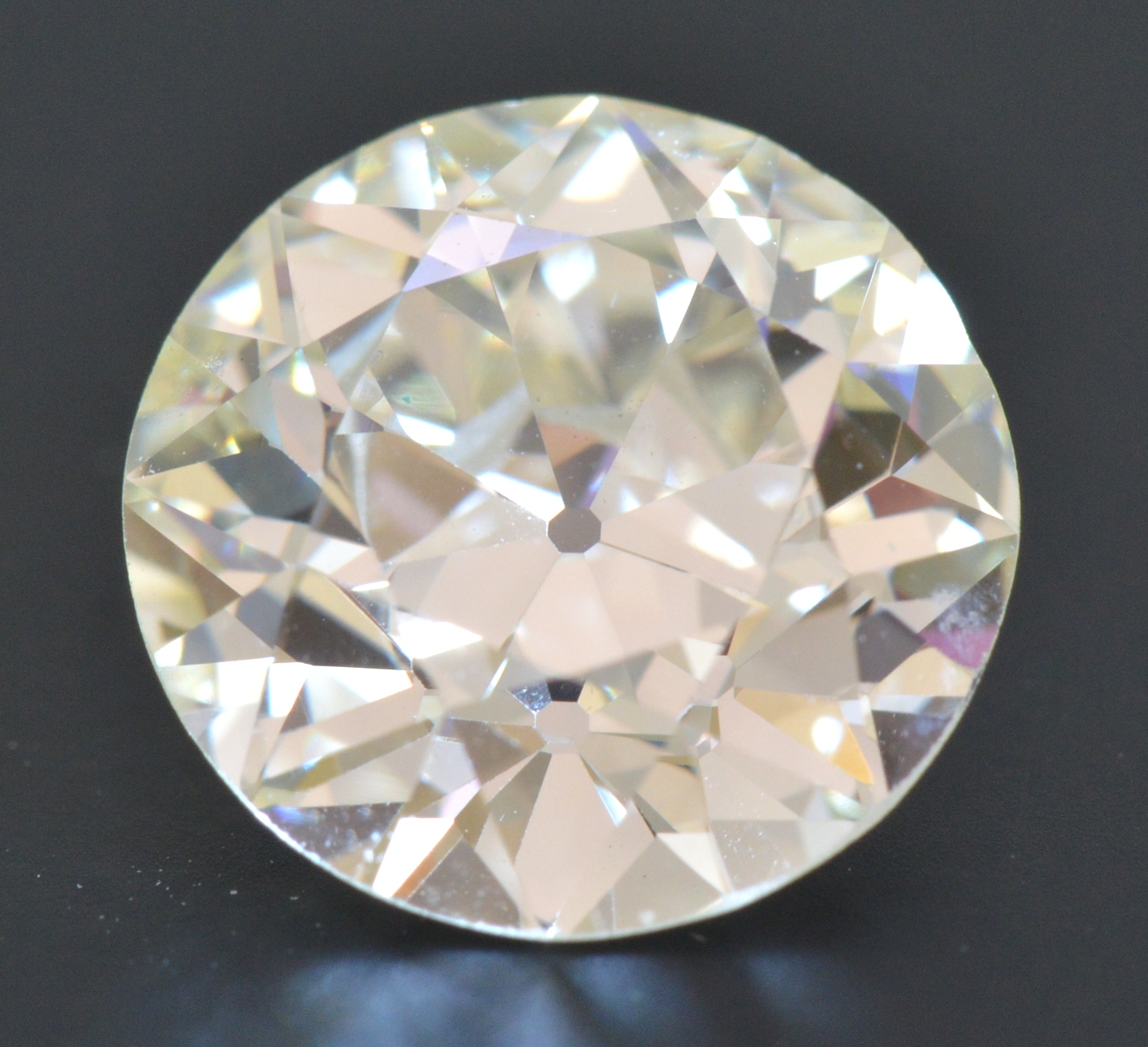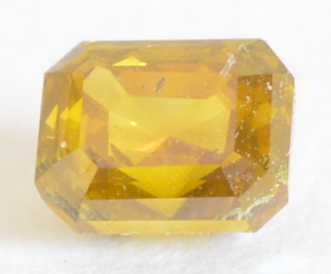© Kirk Feral 2012, All Rights Reserved. These materials may be duplicated for educational purposes only. No part of this website may be duplicated or distributed for profit, for commercial purposes, or for posting to another website, without the expressed written consent of the copyright holder.
Nearly 60% of all HPHT synthetic Diamonds tested in our published study (Gems & Gemology journal, Winter 2012) could be detected with a magnetic wand, either by the Direct method or Floatation method. This suggests that jewelers and diamond dealers can use the Direct method to quickly scan a parcel of loose natural Diamonds with a magnet to detect synthetics. Our study results found that 85% of HPHT synthetics over a half carat in weight were magnetically detectable. Although rare, most synthetic Diamonds over 1 carat are yellow HPHT synthetics, and all such examples in our study contained enough flux metal to show a Pick-up response to a magnet.
HPHT Synthetic Diamonds
Published literature by this author and others cite how magnetic response can often distinguish synthetic Diamonds from natural Diamonds of any color. It is not the dopants used in synthetics that cause magnetic attraction. The dopants used are the same elements involved in color in natural-colored Diamonds: boron for blue color and nitrogen for yellow color. These elements are non-metals, and they are not magnetic. Irradiation (natural or laboratory) can induce pink color, as well as blue color in natural and synthetic Diamonds. Both natural and synthetic Diamonds often fluoresce under UV light, but fluorescence in synthetics is often brighter and more artificial in color.
The magnetic attraction we often see in colorless and colored synthetic Diamonds manufactured under high pressure and high temperature (HPHT) is due to ferromagnetic inclusions of iron and nickel flux that are present as remnants of the manufacturing process. Unlike nearly all other transparent gemstones of any kind (natural, imitation or synthetic), the type of magnetic responses shown by many HPHT Diamonds is ferromagnetic rather than paramagnetic or diamagnetic. Often these synthetic Diamonds will be picked up by a magnet. Any magnetic attraction at all in Diamond, weak or strong, indicates a synthetic Diamond containing metallic particles. Both the Direct method and Floatation method can be used to identify synthetic Diamonds. Because the inclusions are ferromagnetic, a tiny Pinpoint wand works equally well as a standard 1/2" wand.
Not all synthetic Diamonds are created by the HPHT process. Newer on the market are CVD synthetic Diamonds, which are manufactured by a different process called Chemical Vapor Deposition. This process deposits carbon without involving metallic flux. All CVD synthetic Diamonds, regardless of color, are magnetically inert (diamagnetic) and cannot be separated from natural Diamonds by magnetic response. This type of synthetic Diamond is encountered less frequently in jewelry than HPHT Diamond, but that may change over time. CVD synthetics are cheaper to produce than HPHT synthetics, but more difficult to produce in larger sizes.
Direct Method: A Colorless HPHT Synthetic Diamond Picks Up
Natural Diamond is Inert
GGG Picks Up
Pink CZ (Drag Response)
Synthetic Diamonds: Manufactured Diamonds (not imitations) are becoming commonplace in the jewelry market. These are made entirely of elemental carbon, as are natural Diamonds. They are currently expensive to manufacture compared to Diamond imitations. Natural and synthetic Diamonds can look identical to the naked eye, and often can be difficult to differentiate using standard testing methods. A simple electronic Diamond tester cannot distinguish natural Diamond from synthetic Diamond.
Synthetic Diamonds:
Colorless CVD & Yellow HPHT
All These Pink HPHT
Synthetic Diamonds Pick Up
Synthetic Diamond:
Colorles CVD
Floatation Method: A Yellow HPHT Synthetic
Diamond Shows a Strong Response
Diamonds: Natural, Imitation & Synthetic
Today, Diamond is the most popular and coveted gemstone in the world in terms of total sales. Composed of a single element, carbon, it has high brilliance and is the hardest substance on Earth. Natural Diamonds are magnetically inert (diamagnetic). They can be imitated by natural Zircon, and by many man-made materials such as Moissanite, Strontium Titanate and synthetic Rutile (all diamagnetic). Gadolinium Gallium Garnet (GGG), Yttrium Aluminum Garnet (YAG) and Cubic Zirconia (CZ) are man-made Diamond imitations that can show magnetic attraction. By far the most common Diamond imitation used today is CZ. More recently, lab-created synthetic Diamonds made entirely from carbon are also being produced.
Natural Diamonds: Most natural Diamonds are colorless, but they are also found in a variety of colors. Yellow and brown are the most common, while pink, blue, green and other colors are much rarer. These colors can occur naturally in Diamond due to color centers, but such causes of color do not create magnetic attraction. Most of the colored Diamonds we find on the market have been treated with irradiation, high heat, high pressure or a combination of processes to create color. None of these treatments affect the magnetic response of natural Diamond, which is, with very rare exception, inert (diamagnetic) regardless of color.
Yellow CZ (Moderately Magnetic)
However, colored CZ and YAG often give themselves away as imitation Diamonds simply by their magnetic attraction. These lab gems can imitate yellow, pink and blue Diamond rather well, as shown in the photos above. The Yellow CZ depicted below (left) shows a moderate magnetic response due to the rare earth dopant neodymium. The yellow YAG (right) is doped with a small amount of cerium and shows no magnetic attraction.
Natural Treated Diamonds of All Colors Are Inert
Not all yellow CZ's are magnetic. Magnetic response in any of these imitations varies with the types and concentrations of dopants (coloring agents) used during production. Dopants can be transition metals or rare earth metals, and these are often strongly paramagnetic. Fortunately, rare earth dopants often produce visible magnetic responses and absorption spectra that can be clearly seen with a handheld spectroscope. Such features are not seen in natural Diamonds.
Pictured below are CZ and YAG gems imitating pink Diamond. The bright pink CZ (left) shows a Drag response due to the rare earth dopants erbium and holmium. The pale pink YAG (center) is also doped with erbium and also shows a Drag response, but the Drag response is much weaker due to a lower concentration of erbium. The dark pink YAG trillion (right) is doped with a higher concentration of erbium and shows a Pick Up response. This YAG trillion has a density that is as high as that of any CZ ( SG 5.7) due to the very high concentration of erbium (as verified by JTV's lab analysis).
Yellow YAG (Inert)
Blue CZ (Inert)
Blue YAG (Weakly Magnetic)
Magnetic testing with a Pinpoint wand can be useful for identifying small individual HPHT synthetic Diamonds in cluster jewelry, and for detecting jewelry imitations like GGG, pink and yellow CZ, and pink and blue YAG that show magnetic attraction. An electronic Diamond-and-Moissanite tester is the simplest way to determine if each individual gem in such jewelry is genuine Diamond or an imitation. But the electronic tester fails to distinguish between man-made Diamonds and natural Diamonds. In such cases, a Pinpoint wand comes in handy. Any magnetic attraction to the Pinpoint wand indicates the Diamond is not natural.
Pinpoint Testing for Synthetic Diamonds Containing Metallic Inclusions
The blue CZ shown below (left) appears to be colored by cobalt and iron in low concentration. It is inert (diamagnetic). The blue YAG on the right is colored by cobalt and erbium in low concentration. It is weakly magnetic. Any magnetic attraction encountered in transparent colored gems during testing eliminates natural colored Diamond as a possibility.
Pink CZ (Drag Response)
Pink YAG (Drag Response)
For a more detailed look at magnetism in Diamonds, see our feature article "Detecting HPHT Synthetic Diamonds Using a Handheld Magnet" in the Winter 2012 issue of Gems and Gemology.
This concludes our discussion of magnetism in Diamonds. To learn about magnetism in Sapphire and Ruby, go to the Sapphire and Ruby section.
Untreated Colorless Diamond (Inert)
Unfortunately, not all HPHT synthetic Diamonds can be separated from natural Diamonds with a magnet, as not all contain detectable metallic inclusions. This is particularly true for very small gems. About half of HPHT synthetics under a half carat show no attraction to a neodymium magnet even when the Floatation method is used.
Visible Black Metallic Inclusions in
Yellow HPHT Synthetic Diamond
CZ and YAG: These imitations can be colorless, and colorless examples are indistinguishable by magnetic response from genuine colorless Diamonds. All are inert. Like Diamond, these colorless imitations are singly refractive (isotropic) and have refractive indices that are too high to be measured with a standard refractometer. To spot a colorless imitation, we can measure density (specific gravity) or use an electronic Diamond tester that measures thermal conductivity. A Diamond Tester separates Diamonds from all other imitations such as CZ, YAG, GGG, Strontium Titanate and Synthetic Rutile, except for Moissanite. But Moissanite is readily distinguished by its double refraction.
When colorless, all diamond imitations are inert (diamagnetic), with the notable exception of GGG, which picks up as a result of strong paramagnetism. The Pick-Up response of colorless GGG (and colored GGG) quickly identifies it. No other colorless gems of any kind show a Pick-Up magnetic response except rare synthetic Terbium Gallium Garnet (TGG) gems, and some not-so-rare synthetic Diamonds, which can be ferromagnetic.
Other than GGG, magnetic testing cannot be used to distinguish natural colorless Diamonds from colorless imitations such as colorless YAG, CZ, Synthetic Rutile or Strontium Titanate, as all are diamagnetic. Like Diamond, the colorless YAG pictured below left is diamagnetic (inert), singly refractive (isotropic) and has a refractive index that can't be measured because it is OTL (over the limit). Strontium Titanate is also OTL, singly refractive and Diamagnetic like Diamond. The yellow Strontium Titanate gem shown below right imitating yellow Diamond is colored by the dopant cerium.
Colorless YAG (Inert)
Yellow Strontium Titanate (Inert)
The Synthetic Rutile shown below (left) and Moissanite (right) are Diamond simulants that are also OTL and diamagnetic, but both are easily distinguished from Diamond by double refraction under a polariscope.
Synthetic Rutile (Inert)
Moissanite (Inert)
Magnetism in Gemstones
An Effective Tool and Method for Gem Identification
© Kirk Feral
In a feature article in Gems and Gemology (Winter 2012), we published the first known report of gem-grade natural Diamond showing a magnetic response due to natural inclusions (probably pyrrhotite, a black sulfide mineral).
Diamond with Black Magnetic Inclusions


